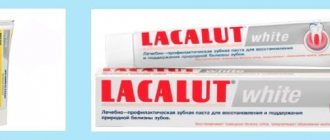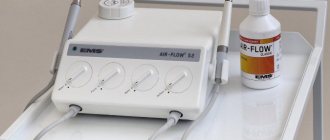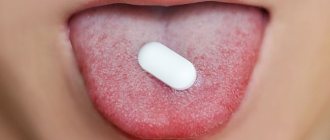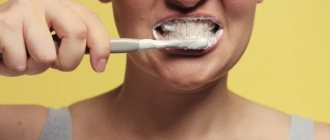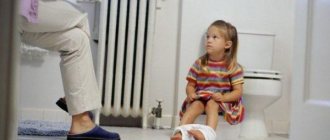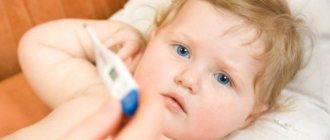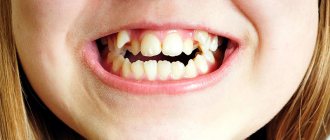Teeth are bone formations, 80% consisting of dentin (hard inorganic tissue). The upper part of the dentin is covered with a dental crown, and the neck of the tooth and its root are surrounded by cement - hard fibers necessary to fix the tooth in the bone alveolus. A person needs teeth for grinding, grinding and chewing food, for the proper formation of the maxillofacial apparatus, consisting of bone tissue and muscles, as well as for speech function. In total, a person has 32 teeth, 4 of which are wisdom teeth and erupt in adulthood or do not appear at all.
Signs of teething in a baby
Baby teeth begin to emerge through the soft layers of gums between 4 and 7 months of age. This process is quite painful and may be accompanied by inflammation, swelling and other symptoms. In some cases, it may be necessary to use painkillers, anti-inflammatory drugs and medications for symptomatic therapy, so it is better to purchase everything you need in advance. You can understand that a child will soon have his first tooth by the characteristic signs that appear in 90% of babies in the first year of life.
Timing of teething
The first "bells"
The first signs of rapid teething are quite vague, but after observing the child for several days, you can notice changes in his well-being and behavior. Most babies begin to act restless, wake up more often at night, and eat less milk or formula about 4 weeks before the central incisors (these teeth appear first in children) erupt.
Baby teething
During this period, behavioral changes can be noted, listed in the table below.
Table. Changes in behavior during teething.
| Action | Why does the child behave this way? |
| Constantly puts toys, edges of clothing, and other objects he can reach into his mouth | This is explained by severe itching in the place where the tooth should appear: the top of the tooth rests on the gum, trying to break through the mucous tissue, and injures it, causing severe irritation. |
| More often requires the breast or asks to be held | Such behavioral changes are especially pronounced in breastfed children due to stronger emotional contact with their mother. For an infant, the breast is not only a source of food, but also a means of comfort, therefore, when experiencing pain and discomfort, the child instinctively looks for an object that he associates with positive emotions. For bottle-fed babies or mixed-fed babies, this item can be a bottle of milk or a pacifier. |
| Refuses to eat complementary foods, even if he previously ate them with pleasure | The explanation for the temporary refusal of foods introduced into the children's diet is due to physical discomfort and unpleasant sensations when the gums touch a spoon or other cutlery. If you give your child a raw apple or carrot during this period, most likely he will try to chew them with pleasure, since such movements provide gum massage and help soothe pain. This method must be used strictly under adult supervision due to the risk of accidental inhalation of small pieces! |
Changes during this period also affect children's sleep. Most babies fall asleep well, but begin to wake up frequently at night to breastfeed. It is impossible to fight this phenomenon - sleep returns to normal after the eruption of the frontal incisors and canines, which are the most painful. To relieve pain, you can use special gels with analgesic properties, for example, “Kamistad Baby” or “Kalgel”. They will also help reduce inflammation caused by trauma to the gums from the sharp tip of an erupting tooth.
"Kamistad Baby"
Important! If during a night's sleep a child wakes up too often, cannot fall asleep for a long time, and each rise is accompanied by a bout of severe crying, it is necessary to consult a doctor to rule out pathologies of the digestive system and other internal organs.
Severe crying during teething
How to help a child during this period?
The main factors that irritate and cause pain for infants are eliminated with the help of effective medications. In addition to them, folk remedies or “home” methods are used. This method is not recommended, but the possibility cannot be ruled out. After all, there are times when it is difficult to find a specialized medical center, but it is necessary to help the baby. These “homemade” types of helpers include solid foods (carrots, apples, dried fruit, etc.).
A good painkiller is regular cold. You can apply a cool spoon or cloth to the gum.
CAREFULLY! A common mistake parents make is giving their baby a regular ice cube. This should not be done! It can cause frostbite to the tissue and cause gum injury.
In cases where teething is very difficult (constant tears and crying, insomnia, etc.), it is impossible to do without medications. A pediatrician will help you decide which one to choose. Consultation with him in this matter is very important.
Typical clinical picture: characteristic symptoms
Classic signs of teething in infants occur approximately 10-14 days before the tip of the upper or lower incisor appears on the gum surface. They are difficult not to notice, as they are of high intensity and affect the general well-being of the child. Parents should be aware of all these signs and symptoms in order to take timely measures and provide the necessary hygienic care and medication if needed.
Swelling and itching of the gums are the first signs of rapid tooth eruption.
Increased activity of the salivary glands
This is manifested by hypersalivation - increased salivation. During this period, the child has to be changed every 1.5-2 hours, as his clothes quickly become damp due to constantly flowing drool. Increased attention should be paid to hygiene: a humid environment causes irritation on the skin of the chin and neck and promotes the spread of pathogenic bacteria. A child with excessive drooling should be bathed daily, sometimes even 2 times a day. It is advisable to add a decoction of string or chamomile to the water (you can use regular table salt) - they will relieve inflammation, soothe the skin and eliminate itching.
- Symptoms of teething in infants: how to recognize and respond correctly
Increased salivation
Note! Secretory activity in some children may also be manifested by watery or mucous discharge from the nose. They should have a transparent color and liquid consistency. There is no need to worry about this phenomenon if the child has no signs of colds or respiratory diseases.
Change in body temperature
The appearance of the first teeth is a difficult process for a child’s body, accompanied by inflammation, to which the immune system reacts with a slight increase in body temperature. Usually this indicator remains within subfebrile values and does not exceed 38°C. If the child feels well, there is no need to lower the temperature. In case of severe discomfort, when the child refuses to eat and is not interested in surrounding objects and people, you can use drugs from the group of antipyretic drugs.
Temperature during teething
The drugs of choice for children under 1 year of age are those containing paracetamol or ibuprofen. They can be produced in the form of rectal suppositories or syrups for internal use. These include:
- "Ibufen";
- "Panadol";
- "Nurofen";
- "Paracetamol";
- "Ibuprofen."
Important! For children with a tendency to allergic reactions, it is better to use the drug in the form of suppositories (for example, Cefekon), since the oral forms contain aggressive dyes.
"Cefekon"
External gum changes
The surest way to determine that a child's teeth will begin to grow is to examine his gums. There is a whole range of symptoms that allow you to determine the imminent eruption. These include:
- swelling and swelling of the gums;
- the appearance of a white dense lump on the gum (the upper part of the erupting tooth), when pressed on which the child experiences severe pain;
- hyperemia of the mucous membranes at the site of eruption;
- itching of soft tissues (if a child scratches an inflamed gum, he will close his jaw tightly and make scratching movements);
- bleeding gums.
Gums during teething
If the gums begin to bleed, it means that there is very little left until the first tooth erupts - no more than 3-7 days.
Important ! These symptoms may indicate inflammatory gum disease, such as gingivitis or periodontitis. Despite the fact that they are rarely diagnosed in children in the first year of life, it is necessary to consult a dentist to rule them out. A white lump on the gum may be an abscess or abscess, so it is best to draw conclusions about the causes of the inflammatory process after a medical examination.
Baby's first teeth
Pathological signs: when should you see a doctor?
Some symptoms that young mothers consider normal during teething are not directly related to the process and are the penetration of infection into the child’s body. Teething is stressful for the body, and the child’s immunity during this period is greatly weakened, which creates excellent conditions for the growth of pathogenic bacteria and viruses.
Teething is often quite painful
Listed below are typical signs that require consultation with a specialist, which cannot be considered as a physiological norm during the appearance of baby teeth in infants.
- Temperature . A slight increase in temperature is considered normal during the eruption of frontal incisors and canines, but it should not rise above the upper limits of subfebrility. If a child has a temperature of 38.1°C or higher, you should consult a doctor - an infection has probably occurred due to reduced immunity.
- Diarrhea. It is normal to loosen stools due to increased activity of the endocrine glands, but stools should not be too frequent, watery, or foul-smelling. There should be no changes in the color of the stool, so consultation with a doctor is necessary if the stool has changed consistency, color or smell.
Diarrhea during teething
- Cough . The physiological norm is a slight cough that occurs as a result of saliva flowing down the back wall of the larynx, but a frequent and prolonged cough always indicates a cold infection.
Child at the doctor
Any changes in the child’s well-being and behavior should be a reason for consultation with a pediatrician or pediatric dentist - only a doctor will be able to assess the baby’s condition and draw a conclusion about his health and the need for any therapy. Read the article for treatment of stomatitis at home.
Overdose
In the first 24 hours: pallor, nausea, vomiting, anorexia, pain in the abdominal area. After 12–48 hours: liver damage, metabolic disorders, metabolic acidosis. In severe poisoning, liver failure may progress (with the development of encephalopathy, coma and death). Acute renal failure with acute tubular necrosis can develop in isolation (in the absence of severe liver damage). Other disorders include cardiac arrhythmias and pancreatitis. Drug therapy: methionine orally or intravenously N-acetylcysteine (in the first 2 days after an overdose).
